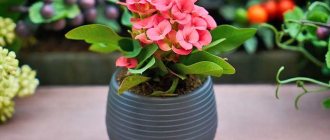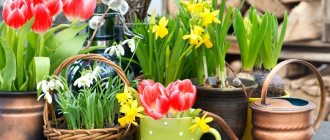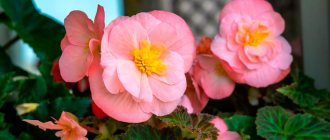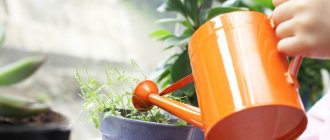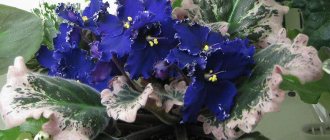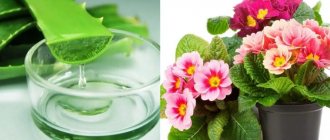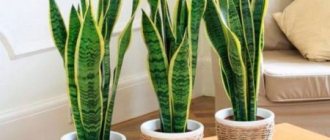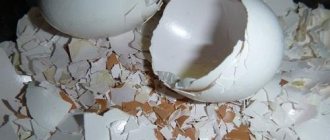Are you choosing what to plant in a pot on the windowsill? It’s easy to get confused in the huge number of indoor flowers. Too beautiful are often capricious to care for. One inept step and the desired result in the form of flowering may not be achieved. Choose a plant from the TOP 10. The rating is based on beauty, accessibility, ease of cultivation and popularity of home crops among gardeners.
Pelargonium
The second name of this flower is geranium. Give it light and it will bloom almost all year round. Among the lush greenery, umbrella-inflorescences are formed that are pleasing to the eye in delicate shades of red, crimson, pink, orange, and white. The aroma of geranium is quite thick. The plant is not recommended for growing in a small bedroom or children's room. Strong odors cause fatigue and poor health.
The best place for pelargonium is the living room. Geraniums are most often grown from seeds. They are available in specialty stores. Among amateur flower growers, packaging of multi-colored assorted flowers in one pack is in demand.
Attention! Pelargonium fragrant has a strong aroma. The beautifully flowering species is less odorous, so it is also suitable for the bedroom.
What's the best thing to grow at home?
Some gardeners prefer to grow one or more types of plants in their home. Typically, it depends on their preferences. However, there are people who believe in omens and plant plants that symbolize something or have positive properties.
The question of which flowers are best to plant at home interests many, but there are specimens that lead in this extensive list:
- Hibiscus or as it is also called “Chinese rose”. Almost any rosacea is associated with love, tenderness and beauty. Therefore, if you want love and harmony to always reign in your home, plant a hibiscus. This beautiful bush with fragrant flowers will create a spring mood even in winter;
- orchid. Another flower with love energy. Its presence helps cleanse the aura, improves mood, and it is unpretentious in care, you just need to follow simple rules;
- lavender. Planting lavender at home is recommended for those who have health problems, in particular sleep disorders. In addition to the subtle aroma that lavender produces, it has a calming effect. These healing properties have been known for a long time, so lavender branches are dried and made into fragrant sachets, which are laid out in the closet with clothes;
- geranium. Small flowers with a specific smell have a beneficial effect on their owners. Their sleep is normalized, their mood improves, and colds occur less frequently. Due to the persistent smell, it is not recommended to place geraniums in the bedroom; the ideal option is a window sill in the living room or kitchen;
- violets. These colorful flowers delight the eye with an abundance of shades. It is a rare species of houseplants that can boast such diversity. The color of a violet directly affects the energy of its owner. Thus, blue violet nourishes creative people with inspiration, pink violet supports a romantic atmosphere, white violet personifies purity and cleanses the house of negativity. Violets are difficult to care for, but their beauty is so captivating that flower growers willingly grow them.
When choosing house plants, you should determine what is more important specifically for you: their healing properties or ease of care. Often indoor flowers combine both qualities.
Ficus
This flower is classified as a useful species. It purifies the air in the room from harmful chemical compounds and saturates the atmosphere with oxygen. Ficus takes root equally well in any room. If only he was warm and had enough light. Otherwise, the plant will develop poorly and will not be able to fully express its beauty.
Ficus will not please you with flowering in the usual sense of the word. It has beautiful greenery. Several types are available for sale. They differ from each other in color and pattern on the foliage.
Attention! A variety called rubber-bearing is less demanding on lighting. But the capricious Ficus Benjamin is more popular among the people. The variegated beauty is grown in large pots. Its height at home reaches 2-3 m.
Growing plants as a business
Growing indoor plants with diligence grows into a whole business that generates income.
Where to look for clients
You can create an account on Instagram “I will sell houseplants on a turnkey basis.” It is best to promote using targeted advertising and barter. Another option is your own website with the ability to select all options online.
To begin with, social networks are suitable as platforms for promotion. Most of them have the necessary functionality to create a store. Now these sites are much more popular and convenient for sales than simple sites.
Collectors have interest clubs both online and offline. This is also an excellent platform for selling and for increasing your own collection.
Surpluses of specific species are best sold in specialized communities: lovers of orchids, cacti, violets, etc.
The most convenient option for renting plants is an agreement with event organizing companies or cooperation with photo studios. It's better to do it directly. It is also worth creating a simple website and an Instagram account, with the help of which you can promote your services.
How to arrange delivery
For logistics, you will need your own car or services from a transport company. Having only self-pickup will reduce the number of customers significantly. Transportation by metro or bus can make the business seasonal: in winter, due to the cold, this will be difficult to do, not to mention the impossibility of transporting large items by public transport.
Collectors often use local pickup within the city. Cacti and succulents that can live for some time without soil can easily be sent by mail at above-zero temperatures. The remaining plants are transported by public transport, by taxi or by your own car.
If you have your own car, you can offer delivery upon purchase, but you can rarely earn more than 300 rubles.
Delivery is also a prerequisite for effective rental. An order is always for several plants; it is impossible to transport them by public transport. A minivan or truck will be suitable for transportation, depending on the size of the business. For heavy tubs you will need a loader.
How much can you earn
The earnings range is wide. You can sell the surplus of your collection and earn 500-600 rubles per month, or breed rare plants and receive 20-40 thousand per month, depending on the scale of cultivation and species. The numbers are completely different when organizing space, renting out plants for events and photo shoots.
Pros of business based on plants
Let's start with the pros:
- In some cases, almost passive income. Caring for many plants is simple and does not require large investments of time and money;
- Can be used as both a part-time job and the main source of income;
- Self-development and study of the world of botany;
- Relatively free schedule;
- The opportunity to learn something new: creating pots, cache-pots, shelving, etc.;
- Self-expression: you can create mini-gardens, floraums, flower arrangements;
- Great opportunities for hobby development;
- Favorable indoor plants improve the air in the apartment;
- Meeting like-minded people.
Disadvantages of commercial crop farming
There are few disadvantages, but they are:
- It is necessary to purchase additional basic equipment: a humidifier, a phytolamp, a hygrometer, a rack;
- It is difficult to develop in small towns where there may be no market;
- Pests need to be monitored carefully. If you miss mites or fungus, you can lose your entire collection;
- Growing plants inevitably generates dirt: scattered soil during transplantation, dirty water spilling from pallets;
- Difficulties with holidays: the garden needs constant watering and care. If you have pots with automatic watering, this disadvantage can be eliminated.
Crassula
You may know this plant under the name money tree. It is easily propagated vegetatively (part of a twig). Growing a fat plant is also easy - its requirements for conditions are minimal. You may place the crop far from the window or even forget to water it. The money tree does not have flowers, but the rounded green coin leaves look attractive.
There is a popular legend associated with the second name of the plant. According to her, the money tree brings financial luck. The higher and more spreading it grows, the better. There is an opinion about the positive impact of the fat woman on the emotional atmosphere in the house.
Gloxinia
A low-growing plant with a rosette of large flowers is appropriate in a bedroom setting. Its petals are velvety to the touch and delight the eye with a pleasant color. The buds combine shades of lilac, purple, pink, crimson, and white. There are mono-color and two-color options. Do you want to grow gloxinia?
Try to provide her with comfortable conditions:
- good diffused sunlight;
- abundant watering (in a tray);
- intensive spraying of the surrounding air, especially during active growth.
Orchid
Reminiscent of butterfly wings, the exquisite petals are wonderfully combined with the juicy emerald stem. In the wild, the flower prefers to grow in humid tropical and subtropical climates, usually in mountain forests.
However, planting an orchid at home and providing it with everything it needs is also quite possible. The plant can successfully settle in the most ordinary apartment.
Chlorophytum
Also, only the leaves are decoratively valuable - long lanceolate plates with uneven color. Chlorophytum is a purifying plant for the air in the room. At the same time, it does not require regular watering. Greens accumulate and retain moisture.
Sunlight is also not necessary for a spreading bush. Chlorophytum is even grown on the closet. There are several decorative varieties of culture. If you choose a specimen with a beautiful border or stripes on the leaves, it is still better to give it normal lighting. Only under these conditions will the greenery be bright and its decoration clear.
What result
The first responses came from advertisements on social networks and from Avito. I didn’t expect that there were so many people who wanted to buy indoor flowers.
The fastest to sell were ferns for 150 rubles (RUB 1,200) and spathiphyllum for 120 (RUB 400, gave a discount). Then the shoots of the fat plant went for 50 rubles (700 rubles, there was a discount).
The violets did not arouse any interest before flowering. Flowering specimens were sold for 230 rubles (2,300 rubles). We bought only 1 ficus for 300 rubles.
In total, in 2 months (from the moment the advertisement was posted), I sold flowers worth 4900 rubles. I fully repaid the costs, including the phyto-lamps, which still serve me to this day.
Cyclamen
Do you want to have blooming beauty on your windowsill in the midst of autumn, which is poor in bright colors? Then plant an alpine violet, or scientifically called cyclamen. It is during the cloudy season that it delights with juicy purple, red, white, carmine or pink petals. The rest of the year, the plant is decorated only with elegant heart-shaped leaves with a marble pattern.
Attention! Cyclamen loves the sun and does not tolerate heat or excess moisture. Take these factors into account, especially in the summer.
Anthurium
A very unusual indoor plant. It amazes with its love of life and gives positive emotions even when it is damp and cloudy outside.
If you care for your anthurium correctly, it will bloom literally all year long. In addition, there are varieties with decorative leaves, heart-shaped and oval. They are beautifully cut at the edges and have a delightful shine. In humid tropical climates, anthurium leaves turn to follow the sun.
Dracaena
Dracaena is a kind of indoor palm tree. It is not one of those, but it resembles an exotic culture in appearance. Bunches of narrow decorative leaves are collected at the ends of the branches. In a spacious living room, a succulent shrub will take its rightful place in a large tub. Provide it with enough heat and light, periodic spraying of greenery and air to get full-fledged juicy greenery.
In home floriculture, the most in demand is dracaena bordered. Its subspecies:
- Tricolor. The leaf has reddish and yellow stripes. From the side, the greens have a golden tint.
- Colorama. The edging has a soft scarlet color and occupies almost the entire leaf area.
- Bicolor. The dark leaves are outlined with a thin pink stripe.
- Magenda. The border is crimson or red.
Croton
Croton or codiaum is native to the tropical regions of Southeast Asia and Oceania. Although the plant is considered finicky, if you follow a number of rules, it is quite possible to grow it at home. First of all, croton needs suitable temperature and humidity. And the abundance of light will provide its leaves with health and a magnificent appearance.
The beautiful coloring of leaf blades with veins and a straight trunk make croton a desirable neighbor to decorative ivy. From these fashionable plants it is easy to create a composition with an amazing richness of color palette.
Violet
This indoor flower is also known as Saintpaulia. It is distinguished by a huge variety of varieties: in nature, there are species with different colors of petals, type, shape and shade of leaves. One thing is constant - their greens are dark and uniform.
During flowering, the violet produces a bright rosette. Saintpaulias are grown in regular or hanging pots. You can get a new copy to increase your window plantation with just one piece of paper.
Attention! Violet loves to bathe in diffused sunlight, but direct rays are contraindicated for it.
Cactus
On a windowsill or desktop, a representative of the Cactus family will grow almost without your attention. The plant's homeland is the Earth's equator. Therefore, it takes root well under the scorching sun in conditions of moisture deficiency. Some species bloom beautifully, but this is not always easy to achieve. The cactus is diverse in its types. Plants differ:
- size;
- trunk shape;
- length of spines;
- shape and color of needles.
Attention! There are cacti without needles. There is a species that spends almost the entire growing season under the ground and releases its head only during the flowering period.
Spathiphyllum (spathiphyllum)
The plant with large glossy leaves is also known by another name - Women's Happiness. Greenery cleanses the air of harmful impurities and has a positive effect on the overall atmosphere in the room. The lanceolate leaves of the crop grow directly from the ground. Snow-white buds appear on long stalks. It is not easy to achieve flowering of spathiphyllum. For this he needs:
- moderate lighting without bright sun and strong shading;
- temperature regime about +22 °C;
- absence of sudden thermal fluctuations and drafts;
- spraying and moderate watering;
- regular feeding.
Availability for sale, ease of propagation and cultivation determined the popularity of the proposed plants among owners of indoor flower gardens. Take advantage of the experience of other gardeners to add greenery and bright colors to the everyday life of your household.
What are your favorite indoor plants?
Where to start growing indoor plants
You can get popular houseplants for free or for very little money. They are often given away during moves and renovations. They also share the children of the growing collection. It’s worth looking in regional groups like “I’ll give it away for free”, on Avito, Yula or Darudar.
It makes sense to start growing your own garden with simple specimens that do not require special conditions. This will allow you to practice plant growing, learn the principles of care and understand whether it is possible to turn your hobby into a business.
What you need to grow
A hobby does not require many resources and equipment. First of all, this is a place: a separate room, an insulated balcony or large window sills. It is convenient to use the simplest wooden and metal Ikea racks (from 700 rubles) to place pots and necessary equipment. For wintering succulents, cacti, certain types of orchids, and Venus flytraps, a glazed but cool balcony (average temperature +12-+15°C) is suitable.
Equipment
Equipment you need is a phytolamp, a humidifier and a hygrometer.
Some types of indoor plants require more light, while others need natural daylight. The same goes for humidity. Those with aerial roots, such as monstera or phalaenopsis, absorb moisture from the air. Therefore, it is necessary to monitor the optimal level of moisture. A hygrometer will help with this.
Priming
You will also need good soil, drainage and comfortable pots. The soil should be selected individually for each specimen. Some require a more nutritious substrate, while others can grow directly in the stones. Violet soil is not suitable for orchids, nor are pots. Expanded clay is used for drainage. It is placed at the bottom of the container. Drainage retains excess moisture and prevents roots from rotting.
As an alternative or more advanced option, Lechuza-pon substrate is used. It consists of porous materials, which allows it to retain water and release it gradually. Thanks to this, root rot does not occur. The average cost of a 6-liter pack is 900 rubles.
Substrate for indoor and potted plants Lechuza-pon
Another interesting option is the German Seramis primer. It consists of different-sized clay granules. There is also a separate Seramis for orchids: with pieces of tree bark. The principle of operation of the substrate is similar to Lechuza: the granules retain water and gradually release it. The average cost of 2.5 liters of Seramis is 600 rubles.
A huge plus of Lechuza-pon and Seramis: the absence of an earthen component. Thanks to this, the main disadvantages of plant growing disappear: dirty, flooded window sills and soil on the floor after replanting. Both substrates contain a sufficient amount of minerals to eliminate the need to purchase additional fertilizers. They do not require replacement every few years, so they are very economical. Also, when using Lechuza-Pon and Seramis, drainage is not needed: the granules take over this effect.
You can use self-watering pots or a more budget-friendly option - ordinary plastic pots with holes in the bottom. If necessary, the plant is transplanted into another container before sale.
5 tips for getting started in crop farming
- Excess collections are sold in shops at botanical gardens. For the most part, they are planted in the correct, non-transportable soil, well-groomed and not infected with parasites. There are also rare species that are not so easy to get in regular stores. There is also a minus of shops at botanical gardens - the inconsistency of the assortment. But it’s worth going there as if you were on a hunt, looking for unusual and interesting specimens.
- It is best to grow something that easily gets along in one microclimate.
- You cannot place different flowering indoor plants with each other. There is a high risk that they will begin to cross-pollinate. And this entails a change in the color and shape of the flowers, the loss of their original appearance.
- Euphorbia and Kalanchoe can scatter their seeds into other people's pots.
- Succulents need a lot of light to grow well, so you shouldn’t keep them next to tall specimens.
Which plants to choose for sale
It is worth paying attention to rare, unusual and beautiful-looking specimens. Succulents are in great demand: echeveria (echeveria), zamioculcas, crassula, lithops. They are used to create gardens, closed ecosystems, and florariums. With the right microclimate, succulents do not require special care. Their cuttings take root easily and produce roots. There are interesting options for succulents on the Raritet plants website or from Peter Lapshin. Children are often exchanged and offered in groups on social networks, for example, “Cactus Club”.
Varietal violets are popular. They are unpretentious and grow quickly. It is best to consult and select interesting specimens on specialized forums: “Violet Island”. Unusual violets are sold by collectors, for example, Maria Rezankova.
Tall and unpretentious ficuses, chlorophytums, monsteras, zamioculcas, and spathiphyllums are excellent as office plants. They are used for landscaping commercial premises. They can be bought on Avito or in flower sales groups on social networks. They are inexpensive, but with proper care they grow quickly.
An interesting option is growing exotics. You can buy them when you are still a child. In this case, their liquidity increases. For example, atmospheric tillandsias are unusual and attractive epiphytes. You don’t even need soil to grow, and care replaces spraying every few days. At the same time, the price starts from 450 rubles for a child of the most popular species and reaches 3000 for Tillandsia xerographica.
Which phytolamp is better
Most indoor plants require additional lighting. For this purpose, a phytolamp is purchased. Without artificial light it is difficult in the autumn-winter period and in regions with short daylight hours. Conventional incandescent lamps are not suitable, as they require a radiation spectrum close to natural.
Simulation of conditions is obtained by adjusting color temperature and light intensity. Lighting helps growth. It is difficult to grow pelargoniums, cacti, succulents, and hibiscus without a phytolamp. Even shade-loving varieties such as Monstera, Dieffenbachia and Ficus often need additional light.
Phytolamps are:
- Energy saving. Compact size and popular e27 lamp base. However, flower growers say that this is not the best option. Due to its design, an energy-saving lamp emits light poorly. The cost starts from 100 rubles.
- Sodium . Durable, powerful and stable. The main disadvantage of sodium phytolamps is only yellow light. In addition, their flasks become very hot and can even explode if water drops enter them. Price from 900 rubles.
- Induction. Durable, do not heat up, color rendering is close to the spectrum of sunlight. The downside is the high price (from 6 thousand) and high power consumption - 60 watts.
- LED . They consume little electricity, are durable and compact. LEDs provide any spectrum of illumination. A 15 rated watt phytolamp consumes 7-8 watts of energy. Therefore, LEDs are considered one of the most economical solutions. The base version costs from 500 rubles, the linear one - from 2000 rubles.
It is necessary to choose the appropriate form of phytolamp. They are linear (in the form of a long strip) and base. The first ones are convenient to use for plants of the same size and approximately the same type, standing in a row. The second one is more useful for spot lighting.
You also need to choose a phytolamp of the correct spectrum. There are only 3 of them.
- Bicolor spectrum - provides a sufficient spectrum of energy needed for photosynthesis. It is suitable for illuminating both decorative foliage and flowering specimens, for growing seedlings, and to support flowering and growth in winter.
- A full range of . Lamp with a wider range of spectral zones. Slightly inferior to bicolor ones in energy efficiency.
- Multispectrum . Lamp with blue, red, warm white and far red light. Ideal for fruiting and flowering varieties. Indispensable for growing orchids and adeniums.
You need to illuminate no more than 14 hours a day. At night, the lamps are turned off, as the plants need to “sleep”.
Some gardeners make phytolamps themselves using LED strips from AliExpress. This is a cheap option, but not always successful, because... Often LED strips do not have enough power. However, you can make such a lamp yourself using diagrams from the Internet.
How to choose a humidifier and hygrometer
The hygrometer is hung in close proximity to indoor plants, away from the humidifier. This way the readings will be more accurate than with a built-in device. Next, you need to find out what level of humidity the plants need. It is better not to create indoor humidity above 70-75%, otherwise there is a high risk of mold. The cost of a hygrometer on AliExpress is 150-200 rubles.
There is no need to buy an expensive humidifier. A traditional type option that works on the principle of cold evaporation is suitable. The price starts from 800 rubles.

